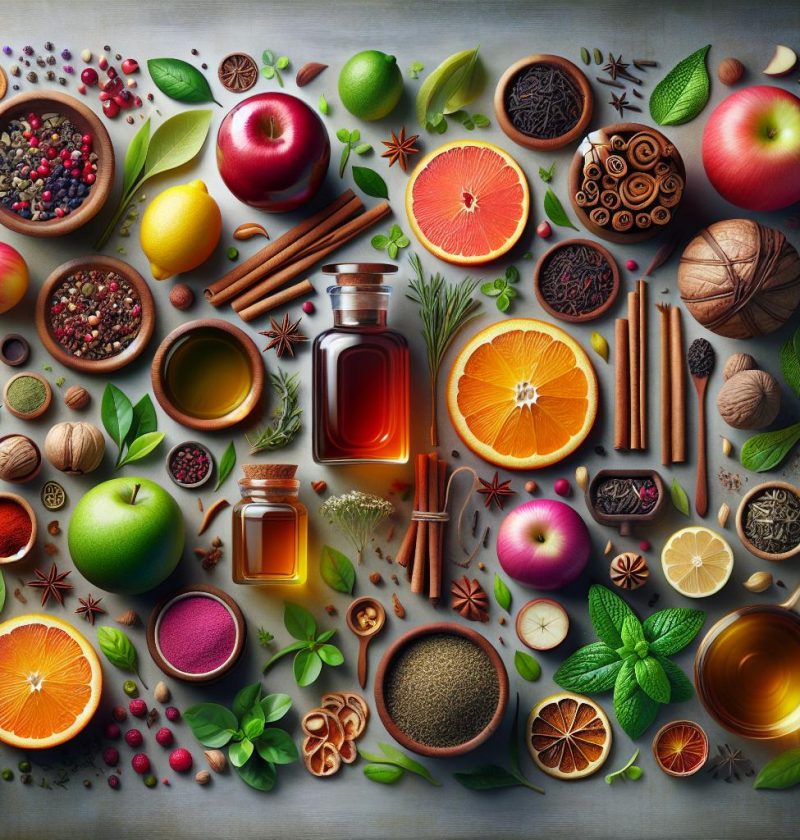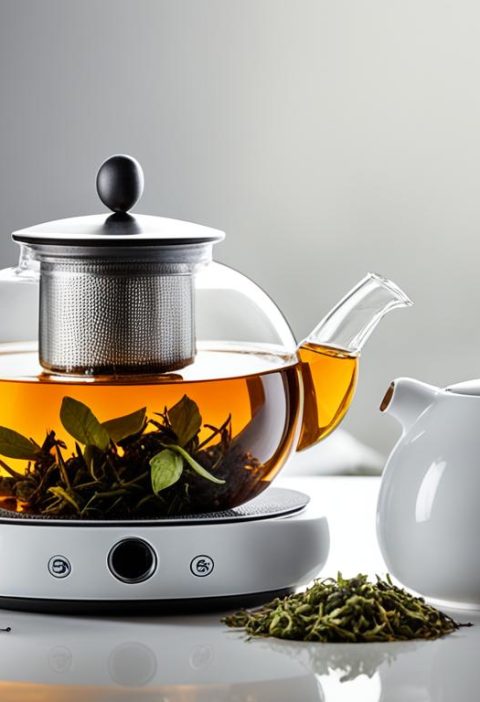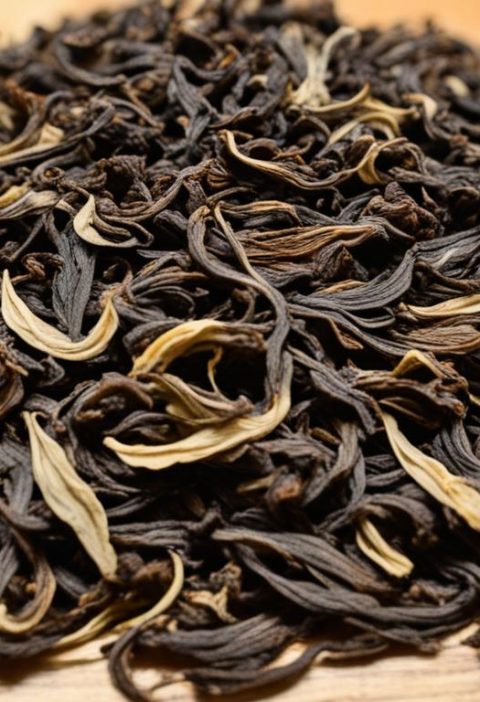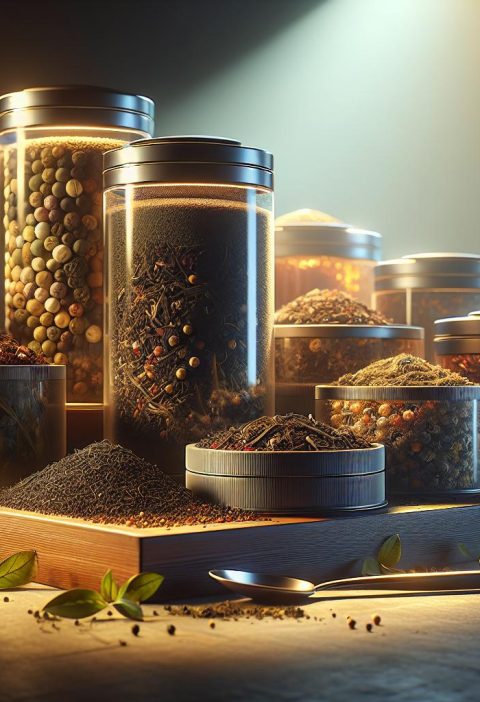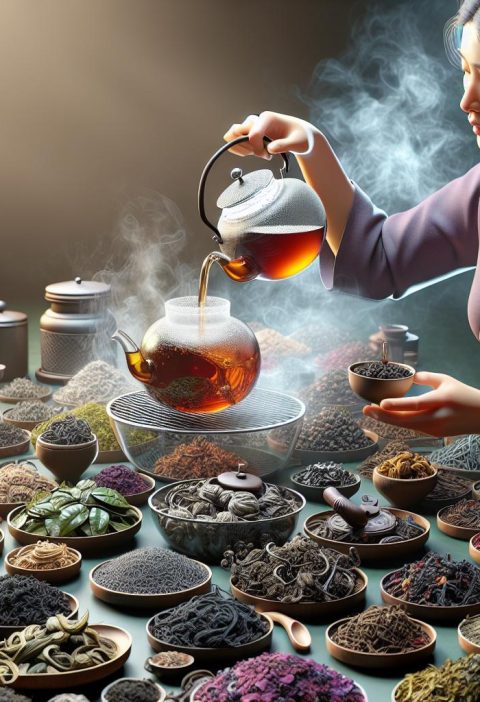Tea blending is an art that allows us to create unique and flavorful blends by combining different natural ingredients. From soothing herbal infusions to robust black tea blends, the possibilities are endless when it comes to crafting our own signature teas. By understanding the characteristics of various herbs, spices, and botanicals, we can curate blends that cater to our specific tastes and preferences.
When it comes to natural ingredients for tea blending, we have a plethora of options at our fingertips. Whether we’re looking to add a hint of floral sweetness with dried rose petals or a zesty kick with fresh ginger, each ingredient brings its own distinct flavor profile to the blend. With the right combination of ingredients, we can elevate our tea-drinking experience and enjoy a cup that is truly our own creation.
Join us as we delve into the world of natural ingredients for tea blending, exploring the diverse flavors and aromas that can be achieved through creative combinations. Let’s unlock the potential of these ingredients and embark on a journey to discover the perfect blend that suits our unique palate.
Understanding Natural Ingredients for Tea Blending
When it comes to tea blending, the selection of natural ingredients plays a crucial role in creating unique and flavorful blends. Let’s delve into the world of natural ingredients for tea blending, catering to beginners, intermediate enthusiasts, and experts in the art of tea creation.
For Beginners: Exploring the Basics
- Start with common ingredients like black tea, green tea, or herbal infusions.
- Experiment with dried fruits such as berries or citrus peels for a fruity twist.
- Introduce spices like cinnamon or ginger to add warmth and complexity to your blends.
For Intermediate Enthusiasts: Elevating Your Blends
- Dive into floral elements like rose petals or lavender for a delicate aroma.
- Incorporate nuts such as almonds or coconut for a rich, nutty flavor profile.
- Consider botanicals like lemongrass or hibiscus for a refreshing and tangy touch.
- Explore rare and exotic ingredients like jasmine pearls or licorice root for intricate flavor layers.
- Blend tea leaves of varying grades to achieve a harmonious balance of strength and subtlety.
- Create signature blends by combining complementary ingredients that reflect your unique taste and style.
Tea blending is an art that offers endless possibilities for crafting personalized teas that cater to diverse palates and preferences. By understanding and experimenting with natural ingredients, we can elevate our tea-drinking experience and embark on a creative journey of flavor exploration. Let’s continue to innovate and blend our way to a cup of tea that truly speaks to our individual tastes.
Exploring Different Flavors and Aromas

When it comes to tearing into tea blending, the world is your oyster. Here, we’ll walk you through a delightful expedition into the realm of diverse flavors and intoxicating aromas that can transform your tea blends from mundane to magnificent.
For Beginners: Embracing the Basics
- Start with common ingredients like fruits such as berries or citrus for a sweet kick.
- Experiment with spices like cinnamon or ginger to add warmth and depth to your blends.
- Incorporate nuts like almonds or hazelnuts to infuse a nutty essence into your teas.
For Intermediate Enthusiasts: Elevating Your Creations
- Venture into using botanicals such as lavender or chamomile for a floral twist.
- Explore exotic elements like lemongrass or star anise to introduce an adventurous flair to your blends.
- Combine different combinations of ingredients to craft unique and complex flavor profiles.
- Dive into rare botanicals like butterfly pea flower or elderflower for a truly distinct tea experience.
- Infuse herbal infusions such as hibiscus or rooibos for added health benefits and vibrant colors.
- Harness the power of layering flavors to create multidimensional teas that surprise and captivate the palate.
So, whether you’re a novice with a craving for exploration, an intermediate creator seeking inspiration, or an expert looking to break barriers, the world of tea blending is ripe with possibilities. Let’s brew up something remarkable together.
Crafting Your Own Signature Tea Blends
When it comes to Crafting Your Own Signature Tea Blends, the possibilities are endless. Whether you are a novice, intermediate creator, or expert in the world of tea blending, there are ways to tailor your blends to suit your taste preferences and level of expertise. Here are some tailored recommendations based on your experience level:
For Beginners: Mastering the Basics
- Start by experimenting with familiar flavors such as fruits like berries or citrus.
- Mix black or green tea with these ingredients to create simple yet delightful blends.
- Consider adding a touch of spices like cinnamon or ginger for a warm, comforting flavor profile.
- Don’t be afraid to try pre-made herbal blends and then customize them to your liking.
For Intermediate Blenders: Enhancing Your Creations
- Dive into the world of botanicals like lavender or rose petals to add a floral essence.
- Experiment with layering flavors by combining different tea bases and infusions.
- Add a touch of exotic elements such as lemongrass or cardamom for a unique twist.
- Consider incorporating rare botanicals for a truly distinctive tea experience.
- Challenge yourself by creating your own herbal infusions from scratch.
- Explore the art of extracting and blending essential oils for a concentrated flavor boost.
- Consider fermenting tea leaves to develop complex and rich flavors.
- Experiment with smoking or roasting tea leaves for a unique sensory experience.
Elevating Your Tea-Drinking Experience
For Beginners: Exploring Natural Ingredients
- Start with fruits and spices for familiar flavors.
- Experiment with dried herbs like mint or lavender.
- Consider adding citrus peels for a refreshing twist.
For Intermediate Blenders: Enhancing Flavors
- Dive into botanicals such as hibiscus or chamomile.
- Layer flavors with vanilla beans or ginger for complexity.
- Introduce exotic elements like lemongrass or cardamom for unique blends.
- Create herbal infusions with ingredients like elderflowers.
- Blend in essential oils such as bergamot for aromatic teas.
- Experiment with smoking or roasting tea leaves for a sensory experience.
| Key Facts | Data |
|---|---|
| Fruits and Spices | Familiar flavors |
| Dried Herbs | Mint, Lavender |
| Citrus Peels | Refreshing twist |
| Botanicals | Hibiscus, Chamomile |
| Vanilla Beans, Ginger | Layering flavors |
| Exotic Elements | Lemongrass, Cardamom |
| Herbal Infusions | Elderflowers |
| Essential Oils | Bergamot |
| Smoking or Roasting | Sensory experience |
Discovering the Perfect Blend

For Beginners: Getting Started with Tea Blending
- Start with fruits, spices, and dried herbs like mint or lavender.
- Experiment with simple combinations to understand flavor profiles.
- Gradually introduce new ingredients to expand your palate.
- Focus on creating well-balanced blends that are enjoyable to drink.
For Intermediate Blenders: Elevating Your Tea Creations
- Explore botanicals such as hibiscus and chamomile for added complexity.
- Layer flavors with ingredients like vanilla beans and ginger.
- Consider incorporating exotic elements like lemongrass and cardamom for a unique twist.
- Play around with different ratios to fine-tune the taste of your blends.
- Take your blends to the next level with rare and premium ingredients.
- Experiment with herbal infusions using ingredients like elderflowers for nuanced flavors.
- Blend essential oils such as bergamot for aromatic teas that delight the senses.
- Explore unconventional techniques like smoking or roasting tea leaves for a truly sensory experience.
| Level | Key Recommendations |
|---|---|
| Beginner | Start with fruits, spices, and dried herbs. |
| Intermediate | Explore botanicals, layer flavors, introduce exotic elements. |
| Expert | Experiment with rare ingredients, herbal infusions, essential oils, unconventional techniques. |
Whether you’re just beginning your tea blending journey or you’re a seasoned expert looking to innovate, there’s always room to discover new flavors and techniques that will elevate your tea blends to new heights.
Conclusion
In our exploration of natural ingredients for tea blending, we’ve uncovered a world of possibilities for creating unique and personalized blends. From fruits and spices for beginners to exotic botanicals and premium elements for intermediate blenders, the art of tea blending offers endless avenues for creativity. By layering flavors, experimenting with rare ingredients, and embracing unconventional techniques, we can craft teas that cater to diverse palates and preferences. Continuous exploration is key to refining our skills and developing signature blends that stand out in the world of tea. Let’s embrace the journey of tea blending with curiosity and passion, as we unlock the full potential of natural ingredients to elevate our tea experiences.
